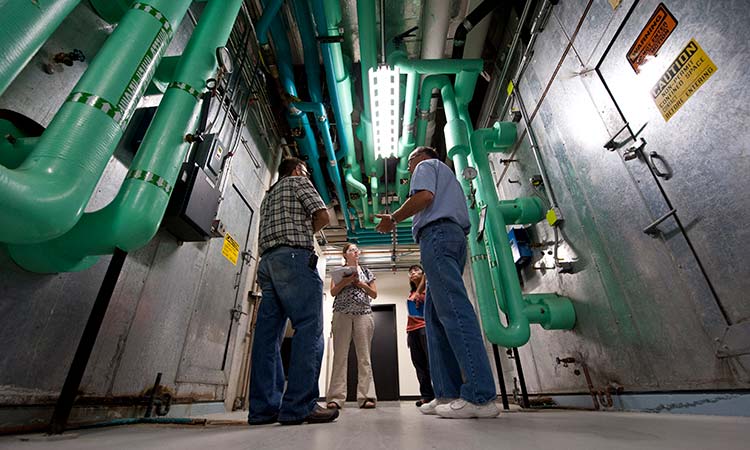REopt Lite Study Models Resilience Scenarios Before and After Energy Efficiency Measures, Illustrates Potential Cost Savings

An energy audit can help identify energy efficiency measures and achieve 20% building energy savings, making resilience investments more affordable. Photo by Dennis Schroeder, National Laboratory of the Rockies
The Department of Energy's (DOE's) State and Local Solution Center used the REopt Lite® web tool to explore the impacts of efficiency on resilience costs. Their analysis used the tool to estimate the optimal mix and size of solar photovoltaic (PV) and battery storage systems that would sustain a critical load for three different building types. The study illustrated the potential cost savings of reducing energy needs through efficiency before investing in an islandable microgrid.
Energy Efficiency + Resilience
In three example scenarios, the team used REopt Lite (now known as the REopt® web tool) to estimate the cost of a microgrid system with enough solar and storage to provide 50% of normal building electricity needs for up to 48 hours. These examples include a range of building types and climate zones, where the patterns of energy use and energy needs during an outage could vary. Then, an energy efficiency scenario was analyzed to estimate the cost of meeting the same grid outage if the same building makes a 20% reduction in baseline energy usage.
Example 1: A Hospital in Nashville, Tennessee
Hospitals are high-priority sites for ensuring a resilient power source is available during an outage. In this example, a hospital would reduce its investment cost by nearly $2 million by pursuing energy efficiency measures to achieve 20% energy savings before sizing its microgrid to run critical loads during a 48-hour grid outage.
Example 2: A High School in Orlando, Florida
K-12 school buildings serve as emergency shelters in many communities. In this example, the estimated upfront cost of a resilient microgrid goes down by about $400,000 if energy efficiency investments can reduce energy needs by 20%.
Example 3: A Police Station in Boulder, Colorado
In this example, the modeled police station has significantly lower electricity needs than the school or hospital. But even in this case, achieving efficiency savings at a police station allows critical operations to continue during a multi-day outage for an estimated $12,000 less in initial investment.
Holistic Resilience Planning
Ensuring that critical facilities have a resilient, reliable power supply is a priority for states and communities across the United States. Incorporating energy efficiency as part of a holistic approach to resilience planning can make resilience investments more affordable and effective. Learn more about DOE's State and Local Solution Center study, Energy Efficiency and Distributed Generation for Resilience: Withstanding Grid Outages for Less.
Related Stories
DOE study: Energy Efficiency and Distributed Generation for Resilience: Withstanding Grid Outages for Less
Sponsors
DOE State and Local Solution Center
DOE Better Buildings Solution Center
Contact
Share
Last Updated Dec. 6, 2025
